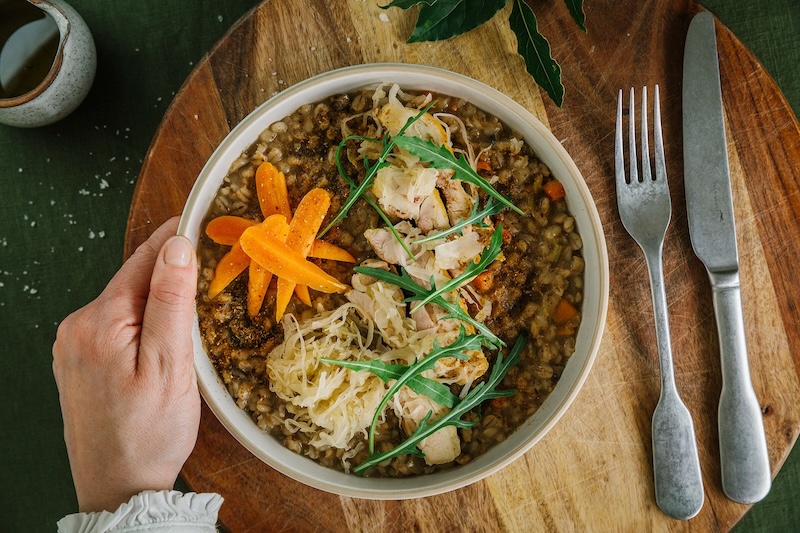Fermentation Fever – Do you know your kimchi from your sauerkraut? Your kefir from your kvass? Imagine a world without bread, butter or wine. Without soy sauce or chocolate. What if we also take away cheese, coffee and even antibiotics? This is what life without fermentation would be like. Fermentation is so much more than a current health trend, it has shaped the world we live in, the bodies we inhabit, the staple foods we eat and even has the potential to shape our future. The truth is, when we ferment, we’re tapping into a collaboration thousands of years in the making between humans and a hidden microbial cosmos, one which we’re only just beginning to understand.
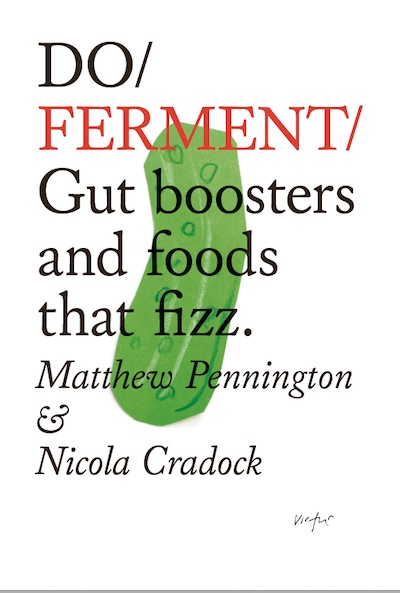
Fermented food is now an essential part of our diet – it’s tasty and we know it’s good for us. Even better, we can make it ourselves. There have been a couple of excellent books published recently that can help make fizzy ferments to our everyday diet.
Do Ferment – published this week – draws on years of creative experimentation at the award-winning Ethicurean restaurant, Authors Matthew Pennington and Nicola Cradock show us how to transform humble ingredients – like vegetables, fruit, milk and grains – into vibrant foods and nutritious drinks. With recipes from classic kimchi to beetroot and caraway sauerkraut, elderflower water kefir and ‘peackles’, you’ll learn the basic techniques to ferment almost anything. Discover: The remarkable power of lactobacillus; why fermented foods are key to gut health, and how to build a weekly rotation of ferments in your kitchen.
Published by Do Books, it’s a £11.99 paperback, and a fabulously interesting little tome. Here are a couple of recipes from the book to inspire you:
Fermented Baby Carrots
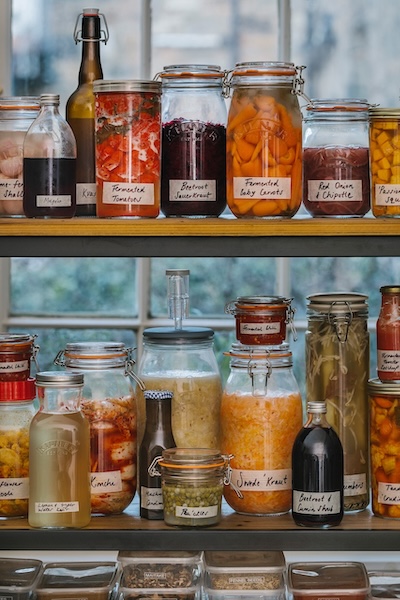
“If you want something easy to start with, try this simple and delicious ferment. Warming spices such as coriander seed, cumin, star anise and fennel seed also work well.”
KIT: Clip-top jar
Carrots (Chantenay or baby carrots work well), a few sprigs of thyme, 2 crushed cardamon pods per 500g (1lb 2oz) of veg, water, natural sea salt.
Scrub the carrots to remove any soil residue. You can leave the skins on or peel them if you prefer. Small carrots can be left whole, and larger carrots chopped up so that all pieces are equal in size — roughly that of your thumb.
Place your jar on the scales and set to zero, then fill the jar with carrots, herbs and spices, and top up with water until everything is submerged. Take note of the total weight, then calculate 2% of this in salt. Add the salt to the jar, clip the lid on and leave on the kitchen work surface out of direct sunlight.
After a few days, you should notice bubbles forming, indicating fermentation has begun. Leave for at least 3 weeks for maximum flavour. Once fermentation is complete, store in the fridge at 5°C (40°F).
Serve with: Delicious as crudités for lunch, picnics, or predinner nibbles.
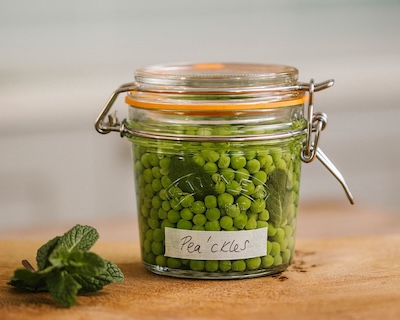
Peackles
“Peackles are, by far, one of our favourite ferments and the one with the cutest name, conjuring up a jar of little smiling peas! The results are zingy little pops of summer and a fun ferment for kids.”
KIT: Clip-top jar
Peas (frozen can be used; just defrost them first), a few mint or lovage leaves (optional), water, natural sea salt.
Place your empty jar on the scales and set to zero. Add the peas to the jar, plus any herbs, and top up with water until all peas are submerged, leaving about an inch of headroom at the top of the jar. Take note of the total weight, then calculate 2% of this in salt and add to the jar. Give it a little mix, then clip the lid on. Leave on the kitchen work surface out of direct sunlight.
After a few days, you should notice bubbles indicating that fermentation has begun. We recommend leaving them for 3 weeks for maximum flavour. However, we understand it may be difficult to wait this long! Your fermented peas will be ready from 7–12 days. Ensure all peas are fully submerged and no kahm yeast has formed. (a thin white film, forming on the surface – simply add a cling film layer to any ferment to create a barrier inhibiting kahm yeast growth). Once ready, store in the fridge at 5°C (40°F).
Serve with: These are the perfect topping for pasta dishes, risottos or sprinkled in salads. A favourite lunch of ours is toasted sourdough with cottage cheese and rocket leaves, sprinkled with peackles.
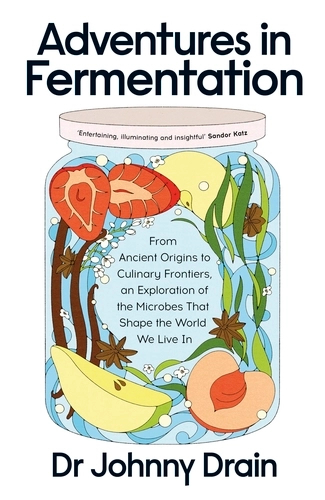

Another book, which is ideal for those more seriously interested in fermentation, is Adventures in Fermentation by Dr Johnny Drain: chef, PHD scientist and writer. It’s a fascinating, fun, and illuminating guide to how fermentation can amplify flavour, improve our health and increase sustainability. The book is full of stories about his life and career and includes working with René Redzepi and the Nordic Food Lab, his travels to weird and wonderful places to try weird and wonderful ferments and the amazing story of his quest for Smen in a Moroccan alleyway.
Blending health, science and cooking, it’s a journey into the weird and wonderful world of fermentation, from its role in our evolution to the foods we love and everything in between. “Fermentation is so much more than a current health trend, it has shaped the world we live in, the bodies we inhabit, the staple foods we eat and even has the potential to shape our future. The truth is, when we ferment, we’re tapping into a collaboration thousands of years in the making between humans and a hidden microbial cosmos, one which we’re only just beginning to understand. “
Adventures in Fermentation is highly acclaimed, and the first book to lift the lid on the power of this ancient practice, exploring how it has been utilised in different cultures across the globe and how we can do the same. With irresistible wit and verve, chef and scientist Dr Johnny Drain illuminates the vast and unsung possibilities that microbes bring to the table, sharing stories and recipes that will entertain and delight readers as they embark on their own journey of discovery. It’s published by Penguin at £20 for a hardback.
Just grab some salt, a few jars and get started…
The Seasoned Gastronome

